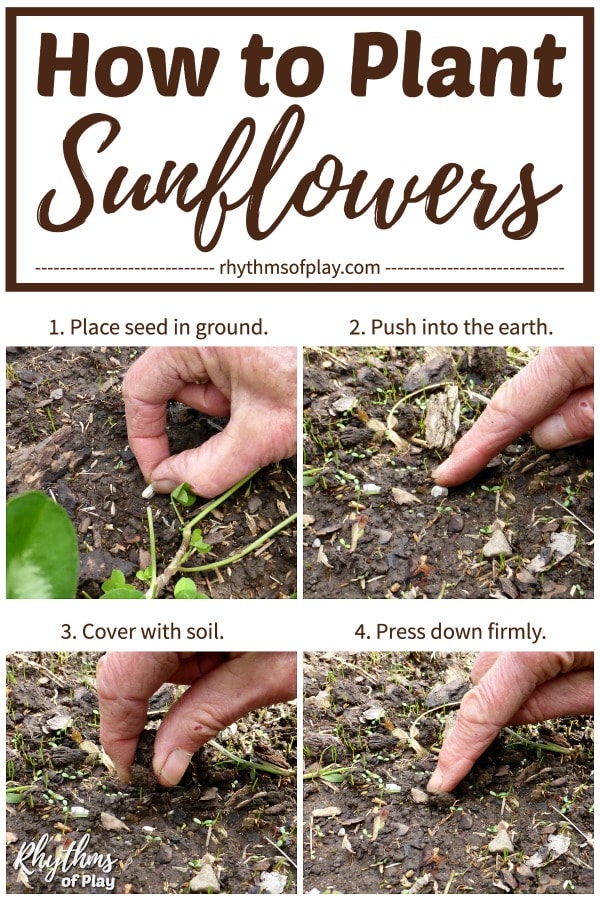
```html
# Master When to Plant Sunflower Seeds
Bright, vibrant, and tall—sunflowers are nature's beacons of summer. But timing is everything when it comes to when plant sunflower seeds successfully. Whether you're aiming for a lush garden or a crop of seedy sticks to enjoy later, knowing the optimal planting season is crucial. Let's dive into the art and science of planting sunflower seeds to ensure you have the best blooming season ever.
## Understanding the Sunflower Season
### The Importance of Monthly Calendars
Imagine trying to grow sunflowers without a roadmap. That’s what planting without a monthly calendar feels like! Monthly calendars provide a fail-safe method for tracking when to sow, when to water, and when to expect those stunning blooms. Think of it as your gardening GPS, guiding you through each phase of your sunflower’s life cycle.
Sunflower planting seasons vary depending on your geographic location. Generally, you can start indoors 3-4 weeks before the last spring frost. For those of you in the Northern Hemisphere, that means late April to early May. In the Southern Hemisphere, aim for late October to early November. But don't worry, we’ll delve deeper into this soon.
### Sunlight: The Sunflower's Secret Weapon
Sunflowers, true to their name, love the sun. They need about 6-8 hours of direct sunlight daily to grow strong and tall. Too little light, and your sunflowers might end up as weaklings, struggling to stand. So, make sure your planting site is a sunny paradise, and you’ll be rewarded with robust, beautiful blooms.
## Techniques for Vibrant Growth
### Soil Preparation
Think of soil as the sunflower’s foundation. Just as you wouldn’t build a house on sand, you shouldn’t plant sunflowers in inferior soil. Sunflowers thrive in well-draining, nutrient-rich soil. If your soil is clay-heavy or sandy, consider mixing in some compost. It's like giving your flowers a nourishing meal before they start their growth journey.
### Watering and Nurturing
Once your seeds are in the ground, watering becomes your sunflower’s lifeline. Overwatering can lead to root rot, while underwatering can stunt growth. Aim for about an inch of water per week, adjusting as needed based on rainfall and weather conditions. Picture it like keeping your sunflower hydrated but not drowned.
## Optimal Planting: Tips for Success
### The When and Where of Planting
Let’s break it down by month. For Northern Hemisphere gardeners, March to April is prime time for indoor seed starting. Transplant outdoors after the last frost, usually May or June. Southern Hemisphere gardeners have a similar timeline, but shifted by about six months. Always consult your local weather forecast for the most accurate timing.
### Planting Depth and Spacing
Sunflower seeds should be planted about 1 inch deep in the soil. Space them 12-24 inches apart if you’re going for a full, beautiful display. If you plan on harvesting seeds, give them even more room—about 28 inches apart. Think of these distances as your sunflowers’ personal space bubble; too crowded, and you’ll end up with a scraggly, underperforming stand.
## The Path to Blooming Success
### Monitoring Growth
Once planted, keep an eye on your sunflowers like a hawk. Check for pests, diseases, and signs of sun stress. Early intervention can save your plants from a disastrous end. Harvesting sunflower seeds involves more than just picking; it's about timing. Allow the flower heads to dry completely on the plant before cutting them off.
### Harvesting and Storing Seeds
Sunflowers are not just gorgeous; they’re also practical. The seeds are a delight for birds and can be roasted for a tasty snack. Harvest when the flower head bends downward and the back turns yellow. Cut the head, hang it to dry, and then rub the seeds out. Store in an airtight container in a cool, dry place.
## Conclusion
Planting sunflowers is like conducting an orchestra—every element must come together in harmony. From understanding when plant sunflower seeds to nurturing them through growth, every step matters. Use monthly calendars, ensure ample sunlight, and prepare your soil for vibrant growth. By following these steps, you'll be well on your way to blooming successfully.
Ready to dive deeper? Click your way to additional resources from the [[Sunflower Growers Guide]](https://www.ballseed.com/vegetables/herbs/sunflowers/) and the [[Royal Horticultural Society]](https://www.rhs.org.uk/plants/helianthus/) for expert tips and tricks to make your sunflower garden shine.
---
### Frequently Asked Questions
#### **Q1: Can I plant sunflower seeds directly in the ground?**
A1: Yes, but starting indoors and transplanting gives you a head start.
#### **Q2: How deep should I plant sunflower seeds?**
A2: Plant seeds about 1 inch deep in well-draining soil.
#### **Q3: How much sunlight do sunflowers need?**
A3: Sunflowers love the sun and need about 6-8 hours of direct sunlight daily.
#### **Q4: What is the best time to plant sunflower seeds?**
A4: The best time varies by location. Generally, start indoors 3-4 weeks before the last spring frost.
#### **Q5: How do I store sunflower seeds after harvesting?**
A5: After harvesting, let the heads dry, then rub out the seeds and store them in an airtight container in a cool, dry place.
```


0 Response to " Master When to Plant Sunflower Seeds"
Post a Comment